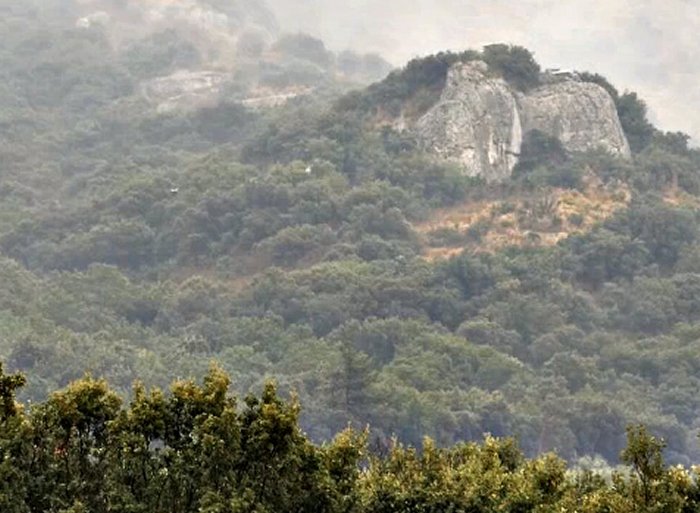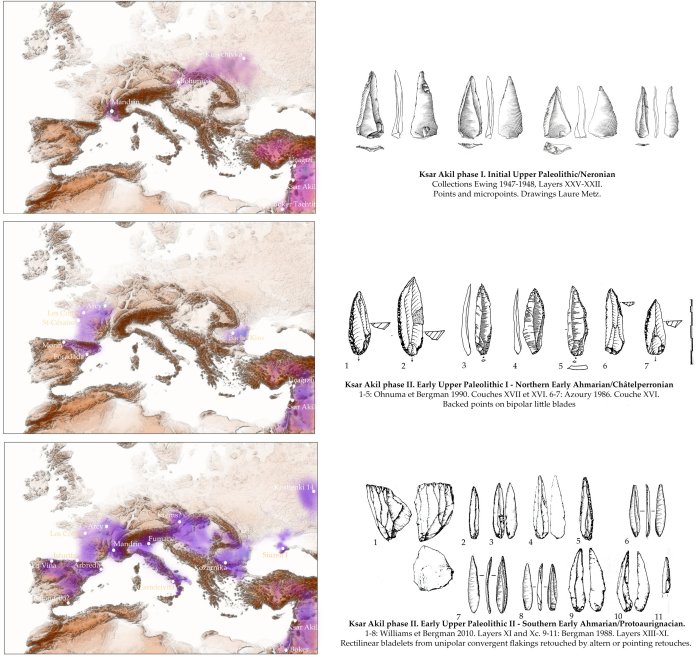Conny Waters – AncientPages.com – The first modern humans spread across Europe in three waves during the Paleolithic, according to a new study.
The archaeological record of Paleolithic Europe leaves many open questions regarding the nature of the arrival of modern humans into the region and the nature of how these newcomers interacted with the resident Neanderthal populations.

Grotte Mandrin (the rock at the center of the picture) in Mediterranean France records the earliest migration of Sapiens in all Europe. Credit: Ludovic Slimak, CC-BY 4.0
The study is published May 3, 2023, in the open-access journal PLOS ONE by Ludovic Slimak of the CNRS and University of Toulouse III, France.
Slimak compared records of stone tool technology across western Eurasia to document the sequence of early human activity in the region.
The study primarily focused on comparative analysis of tens of thousands of stone tools from two sites: Ksar Akil in Lebanon and Grotte Mandrin in France, that recently revealed the earliest Homo sapiens migration in Europe dating to 54,000 years old. The study analyzed their precise technical connections with the earliest modern technologies in the continent.
The author identifies a similar sequence of three technological phases in both regions, suggesting three distinct waves of migration of Homo sapiens across Europe.

The paper provides evidence for three distinct waves of early migration of Sapiens in Europe from the East Mediterranean coast. The image shows three technical traditions of each of these Sapiens migrations. Phase 1, around the 54th millennium, is represented by the Neronian/Initial Upper Paleolithic; phase 2 by the Châtelperronian/Early Upper Paleolithic around the 45th millennium, and phase 3 by the Protoaurignacian/Southern Early Ahmarian around the 42nd millennium. Credit: Ludovic Slimak, CC-BY 4.0
These trans-Mediterranean technological connections allow for a reinterpretation of the pattern of human arrival in Europe and its precise relations with the Levantine region. Further examination of these apparent phases of human migration will establish a clearer picture of the sequence of events as Homo sapiens spread across the region and, in doing so, gradually replaced Neanderthals.
Slimak adds, “Until 2022, it was believed that Homo sapiens had reached Europe between the 42nd and 45th millennium.
The study shows that this first sapiens migration would actually be the last of three major migratory waves to the continent, profoundly rewriting what was thought to be known about the origin of sapiens in Europe.
Chatelperronian culture, one of the first modern traditions in western Europe and since then attributed to Neanderthals, should in fact signal the second wave of Homo sapiens migration in Europe, impacting deeply our understanding of the cultural organization of the last Neanderthals.”
Paper
Written by Conny Waters – AncientPages.com Staff Writer





